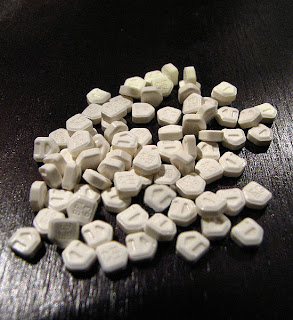We are really proud to announce the launch of our first ever microsite! Explaining our Methadone Treatments–from Methadone Therapy and Methadone Maintenance, to our Methadone Reduction Program–our new microsite is packed with information. Are you or your loved one considering…
 New research explains how addiction to prescription anxiety medication works, and may lead to development non-addictive versions of the drugs.
New research explains how addiction to prescription anxiety medication works, and may lead to development non-addictive versions of the drugs. Scientists from the US and Switzerland have discovered how anxiety medications, such benzodiazepine drugs as Ativan, Xanax, and Valium, work in the brain. As it turns out, the drugs use the same reward pathways as heroin and cannabis—pathways that may lead to addiction.
The calming effects of benzos are due to an increased activity of the neurotransmitter GABA (gamma-aminobutyric acid). This in turn activates dopamine, the ‘gratification hormone’, resulting in a reward pathway in the brain.
Reward pathways are both naturally occurring and already exist in the brain. They are an evolutionary mechanism that was essential to our survival. Their main function is to make us feel pleasure when we engage in behaviours central to survival—such as eating or sex.
Opioids, such as heroin, and cannabis work in the same fashion. And dopamine, as we know from new research earlier this month, is directly linked to a propensity for addiction.
 New research on dopamine and dopamine receptor profiles could lead to new drug addiction prevention and treatments.
New research on dopamine and dopamine receptor profiles could lead to new drug addiction prevention and treatments.
Japanese and Danish scientists have shown in new research that those with higher dopamine levels in the brain have a greater need for stimulation, due in part to the lowered dopamine-sensitivity.
Dopamine is the “gratification” hormone, widely known to relate to the physiology of addiction. Previous research has discovered that drug addictions such as cocaine addiction work by causing a build-up of dopamine in the brain. This build up, in turn, causes a lower sensitivity to the neurotransmitter.
However, according to the new research, it is the naturally occurring higher levels of dopamine in the brain that can lead to addictive behaviours. Dopamine levels can indicate a natural predisposition to risk-taking, and addiction.
 What is Cocaine
What is Cocaine
Cocaine is a stimulant, a psychoactive drug that temporarily increases mental and/or physical functioning. Unlike other stimulants, cocaine is not used as a prescription medicine, but is an illicit drug carefully controlled throughout the world. Cocaine is used primarily recreationally and is a widely abused drug.
Cocaine is highly addictive.
Cocaine was very popular throughout most of the 1980s and 90s, and recent studies suggest that its popularity continues strong. Cocaine, also known as “coke”, “c”, “snow”, “flake” and “blow” among other nicknames, is commonly sold on the streets as a fine white powder.
“Crack”, on the other hand, is freebase cocaine—a water-insoluble cocaine base. Crack is processed to be smokeable. It is the crackling noises of smoking the drug that has given it its name.
 US Researchers at NIDA report having identified a key brain mechanism, better explaining how and why cocaine addiction occurs.
US Researchers at NIDA report having identified a key brain mechanism, better explaining how and why cocaine addiction occurs.
Announced last week, January 7th 2009, government scientists at the National Institute on Drug Abuse (NIDA) said that the new discoveries about the root of cocaine addiction could lead to the development of new drug treatments.
In experiments with mice, scientists showed how cocaine affects the epigenetic process histone methylation. Prolonged cocaine use, they found, can cause permanent changes to the way certain genes turn on and off.
Epigenetic is a process that influences a gene’s expression or appearance without changing the underlying DNA sequence, causing the gene to behave, or express, itself differently.
Histone methylation is the modification of certain amino acids in a histone protein, or the protein around which a DNA strand wind, which essentially turns the DNA off.
 Researchers in the UK have identified a bacterial enzyme that, they say, breaks cocaine down in the body, effectively reducing the drug’s addictiveness and may help fight both cocaine addiction and overdose.
Researchers in the UK have identified a bacterial enzyme that, they say, breaks cocaine down in the body, effectively reducing the drug’s addictiveness and may help fight both cocaine addiction and overdose.
The naturally occurring bacterial enzyme, Cocaine esterase or CocE, essentially breaks cocaine molecules down in the body, reducing its physical addictiveness and eventually lead to a new way to treat cocaine addiction, as well as help reduce cocaine overdose.
CocE, researchers found, is only active in the body for a rather short period of time. However, they have also found a more stable version in a double mutant bacterial version, DM CocE.
In their clinical trial, published in the Journal of Pharmacology and Experimental Therapeutics, researchers from The Scripps Research Institute trained rats to self-administer cocaine. By pressing a button, cocaine would be released to the rats, mimicking human drug-seeking behaviour common to all addictions.
New twin study out of the US suggests that the same gene that leads to drinking alcohol may also lead to marijuana use. Twin studies are used to better understand the genetic influence of behaviours. In such studies, scientists compare…
New research from the McGill University Health Centre in Montreal, Qc. suggests that the effect of daily cannabis use on the teenage brain is worse than previously thought. Moreover, the long-term effects appear irreversible. Marijuana, the most used illicit drug,…
According to a new study, fruit flies show both desperation and relapse when exposed to alcohol for a length of time. Researchers say their study may shed light on the genetic roots of alcohol addiction. Fruit flies, it may seem…

